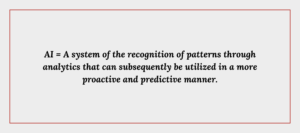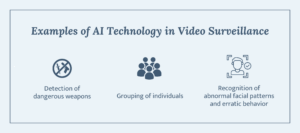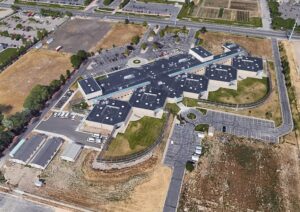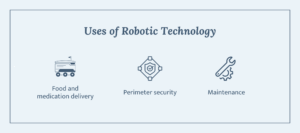
How is Justice Technology Evolving? Discover Five Key Areas of Impact
The New Frontier of Security
One of the most common questions I hear from clients on justice projects is, “How may the future evolution of technology impact the efficiency and safety of justice operations?” More specifically, “How can technology potentially augment the resources of an industry struggling to staff justice operations while still providing sufficient services to support communities’ public safety?”
To help myself get a better handle on the question and explore exactly what is happening in the world of technology, I recently had the opportunity to attend the International Security Conference (ISC West) in Las Vegas. As a result, I learned that what is possible in the future of security-related technology is well beyond what I had initially imagined. Since the conference, I have enjoyed sharing my thoughts on the topic during planning and design meetings on various projects to somewhat “wave a flag” and warn people of the changes to come.
As one might expect in 2024, the most prevalent topic in security technology is the varying usage of Artificial Intelligence, or “AI” as most people refer to it, as an analytical overlay of many different digital technologies. The most eye-catching technologies from ISC West in this area were the hi-tech AI head-up displays being showcased over the top of various video surveillance systems, providing a laundry list of information readouts within the camera’s view depending on the setting. I immediately began to imagine how this amazing technology could be adapted to corrections and detention facilities to augment the daily duties of staff.
Five Pathways to Revolutionize Justice with AI Advancements
Thinking back on what I saw, I have keyed in on five specific areas where AI could have a tremendous impact on the justice community:
1. Access Control
Many vendors and security industries are already utilizing AI technology and analysis to assist in the management of access control in secure areas throughout justice facilities. Its use can range from granting access to certain secure areas using facial recognition and other biometrics, to also providing detailed analytics and reporting of how often spaces are utilized, accessed, etc.
It occurred to me that the capability of being able to pull this data at any time would be extremely useful in providing planners and architects with information on what the space may require, such as square footage, circulation, power consumption, HVAC, lighting, etc. Other information – such as traffic patterns and times of the day during which areas are occupied – could prove to assist operational planners conducting staffing analyses, developing policies and procedures, and planning for emergency situations.

2. Video Surveillance
The monitoring of hundreds, and sometimes even thousands, of surveillance cameras and devices can be overwhelming and is often reserved for use by investigators after there has been an incident or breach. However, with overlaid AI analytic and predictive software applications, the use of surveillance cameras takes on a completely different role. In general, AI is a system of the recognition of patterns through analytics that can subsequently be utilized in a more proactive and predictive manner. Examples range from the detection of dangerous weapons, to grouping of certain individuals, all the way to the recognition of abnormal facial patterns and erratic behavior. Most of these technologies and systems are only as good as the databases that support them and are assumed to be improving daily as they learn.

3. Drones
One of the probably more well-known evolutions in security technology is the use of unmanned aircraft or drones for aerial surveillance. Often, tactical operations and investigative units utilize the technology to obtain direct sight of an incident or crime scene from a bird’s eye perspective. This can be especially useful in telling the story of a crime scene by providing better perspectives of spatial relationships and how they may have played into the commission of a crime. Other applications of drones may include conducting regular roof checks and perimeter surveillance of a secure facility. In this application, their use can almost be completely automated and may also feed into AI monitored platforms for analytics and monitoring.

Drones can provide a bird’s eye perspective, such as this aerial view of the Salt Lake City Detention Center.
4. Robotics
As a society, we have speculated and sometimes joked for many years that someday robots would show up on scene to take our jobs. As technology rapidly evolves, this concept might be closer than we imagined. But our initial perceptions of being replaced by robots may not be entirely practical. Perhaps a more practical use of robotics in a justice environment is better thought of as a supplement in manpower to the ever-growing daily tasks that need to be accomplished. If robotic technology can be used to conduct the more menial tasks, such as food and medication delivery, perimeter security, and maintenance, our human assets can better focus their limited time engaging other humans to better serve their needs.

Example Use: One example discussed at the ISC West Conference regarding the use of robotics in a security setting suggested that, in some instances, removing the human element from security contacts could prove to be beneficial. For example, an unnamed security company utilized robots to patrol public areas and had a much higher success rate in getting members of the public to don personal protective equipment (PPE) during the height of the COVID-19 pandemic. The company learned through their analysis of these contacts that members of the public were far less likely to get into a shouting match with a robot because the robot did not bring biases or agendas in its request to put on a mask, it was just a robot. When you understand that the major issues law enforcement and security-related employees face today center around the human contact aspect of the job and the biases they are assumed to carry with them, it is reasonable to assume people would be less likely to find themselves in conflict with a robot in many cases.
5. AI Integration of Information Across Various Systems
If you have ever planned, designed, built or managed any type of secure justice facility, you may be aware of the common fact that, in years past, these facilities often host multiple networks, platforms, and technology systems that don’t often easily share information or integrate with one another. This is where the human element has been required to monitor and analyze various types of information coming in from multiple sources and organize it in a way to act upon information when necessary. This is very time consuming and staff-intensive for large scale facilities.
Imagine the possibilities of AI monitoring all these inputs and being able to make sense of the data in a split second to detect patterns and information that would allow you to provide proactive responses over reactive. What would your security response be if you were aware of a fire before it happened? What would your staff’s reaction and response be to a multiple-inmate disturbance if AI warned you it was happening before somebody was actually assaulted?
In addition to AI’s future potential ability to monitor multiple systems simultaneously and make instantaneous predictive analysis, the hope is that it also removes a majority of this burden from human resources, freeing up staff to be more effectively engaged to prevent emergency situations in the first place. Again, emphasizing the importance of proactive operational practices over reactional responses that often result in injury, property damage, and disruption to operations.
Example Scenario: Imagine if you will, a troubled individual who has found himself involved in the criminal justice system and who was recently booked into the local county jail. It is after midnight and John Doe finds himself alone in his cell with thoughts of embarrassment, shame, and depression of his recent failures, loss of job, separation from loved ones, and sheer agony imagining what others must think of him. John is also suffering from alcohol withdrawal and has experienced mental health issues in the past. He has thoughts of suicide and fears the unknown.
In the current traditional setting, John’s hopelessness results in his decision to take his own life by tying his bedsheet around his neck and hanging from the vacant top bunk. John’s decision leaves behind a mourning family, medical and correctional staff who feel depression and guilt for failing to recognize and identify his risk, and scrutiny and finger pointing from the community who have lost faith in the jail system’s ability to provide safety and security for all in the justice system.
Now imagine an alternate storyline in the same setting in which John Doe engaged the wall-mounted digital screen’s cell side assistant (Wilson) that projected a humanlike image armed with data and information across multiple information systems and databases. The assistant engages him with questions about his thoughts and utilizes its high-definition, AI-equipped camera to identify changes in facial features and expressions that indicate he is under stress and depression. While attempting to reassure John of his worth and pathway to redemption, Wilson at the same time is accessing the doppler radar sensors mounted in the cell detecting John’s heart rate, breathing, and movement.
While providing John with available resources such as available self-help classes, contact information of attorneys, and scheduling John for the next day’s sick call, Wilson reminds John of his scheduled family visit the next day from his brother, as well as his upcoming court hearing on Friday. Although Wilson has managed to disrupt John’s thought process and actions through personal and professional engagement techniques, Wilson still feels that John is representing a high level of risk considering a past suicide attempt from a previous booking three years ago and quietly alerts security and mental health staff without John’s knowing. As a result of this alternative storyline, John stabilizes over time, better understanding what his future holds and the services available to him. After serving a short sentence, John continues his treatment in the community that Wilson referred him to while in custody. He makes a full recovery, becoming successful in his community and even volunteering his spare time to navigating and assisting those involved in the criminal justice system.

How Does the Future of Technology Impact Planning for Criminal Justice Facilities?
As it relates to the planning and design of justice facilities, the thought of comprehending what will be available from the point a project is initiated to the time it is complete is so far removed and unthinkable that it can often be overlooked. In many cases, the lifespan of a project can range from four to seven years, which is an eternity as it relates to current rates of technology evolution.
One thing is certain: change is inevitable. A majority of criminal justice facility tours I have taken during planning projects starts with the tour guide explaining that “this was originally designed for_______________, but now we use it for________________…”
But it is possible, in my opinion, to plan on some level for the unknown. In most cases, the addition of technology typically involves the need for electrical power, cooling, and space. Most justice facilities are very hardened and are comprised of solid wall materials. Planning for additional space and raceways to run additional power is always a good idea. Designing circulation areas and corridors to accommodate the addition of automated equipment may be a new strategy to consider.
Generally speaking, we need to count on the fact that change will happen, and over the course of a facility’s lifespan, its use and mission will evolve. That being said, what conversations would you like to have had with the past designers and planners of your current facility? Could you have better predicted the changes along the way?
